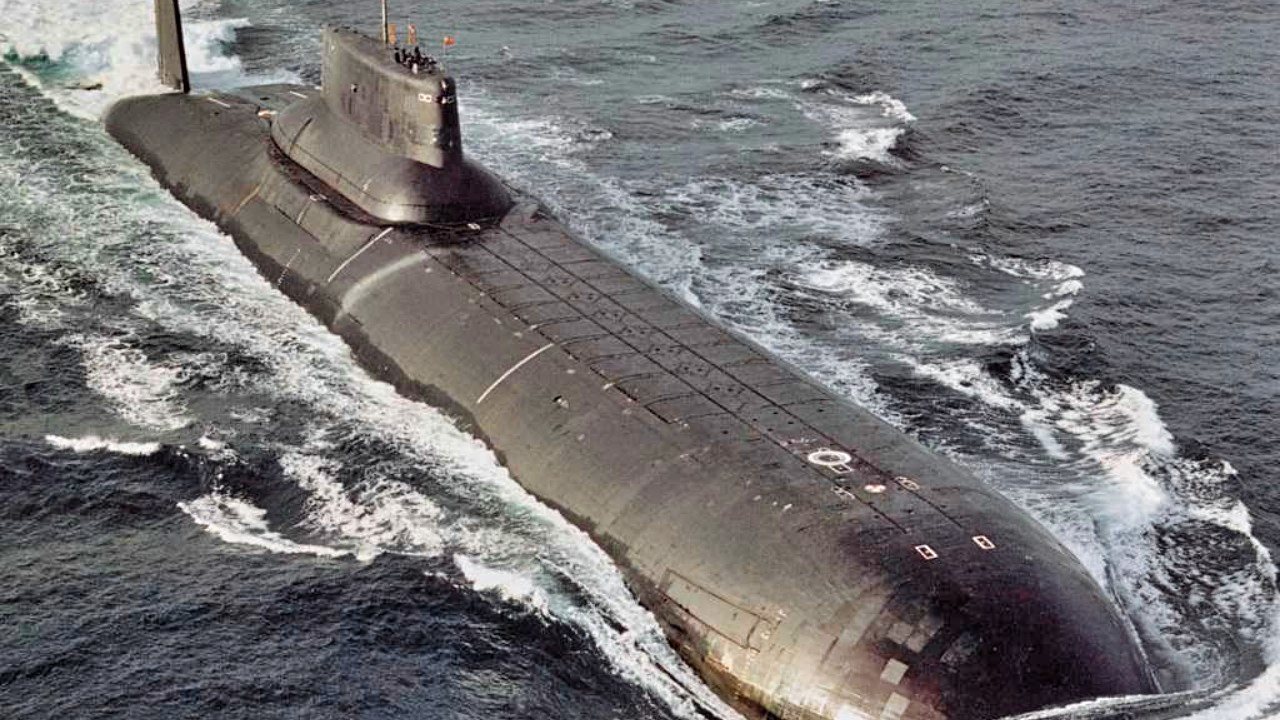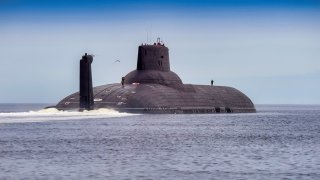Russia's Typhoon-Class Submarines Were Built for Only 1 Reason Only
Tom Clancy's "The Hunt for Red October" features the Soviet Typhoon-class submarine, chosen for its formidable size and capabilities, which outstripped even America's Ohio-class in terms of terror potential.
Summary: Tom Clancy's "The Hunt for Red October" features the Soviet Typhoon-class submarine, chosen for its formidable size and capabilities, which outstripped even America's Ohio-class in terms of terror potential. These submarines, built for absolute destruction, were equipped with nuclear and conventional armaments, and featured unique designs like saunas and swimming pools for crew comfort. Portrayed as a doomsday weapon in the film, the Typhoon-class represented the pinnacle of Soviet naval engineering, embodying the Cold War era's fears and strategic dynamics. Decommissioned in 2021, they've since been replaced by the more advanced Borei-class submarines.
The Typhoon-Class Submarine Was Truly Scary
“British intelligence obtained these pictures two days ago. She’s the Red October. The latest Typhoon-class,” Jack Ryan explained, laying out the grainy black-and-white surveillance images of the latest Soviet undersea behemoth. “She’s a big son of a b----!” Admiral Greer huffed, as he reviewed the blurred images splayed across the square oak able in his office on the seventh floor at CIA headquarters in Langley. “Twelve meters longer than the standard Typhoon. Three meters wider.” Ryan continued matter-of-factly.
And with those words, one of the greatest (fictional, or so we are told) modern submarine stories begins. The scene you just read was taken from the classic film (based on the Tom Clancy book of the same name), The Hunt for Red October, starring Alec Baldwin, as Jack Ryan, Sean Connery as Captain Ramius, and James Earl Jones as Jack Ryan’s boss at the CIA, Admiral Greer.
The selection of the Soviet Typhoon-class submarine as the template for the eponymously named Soviet submarine in the film was not an accident. Clancy, a military aficionado, had done his homework. At the time he wrote the book, and by the time the film was in production, the Soviet Navy’s Typhoon-class submarines were far larger than any submarine in America’s fleet.
These Soviet-era submarines kept US and NATO war planners up at night.
It was not only the size of the Typhoon-class submarine (which was impressive) that instilled understandable fear in the minds of Western defense policymakers. The Typhoon-class submarine’s capabilities were the stuff of what the kids today would describe as “nightmare fuel.” This is one of the primary reasons behind the filmmakers of The Hunt for Red October choosing the Typhoon-class to be its ultimate doomsday submarine.
Because, for all the fictional advancements they gave to the submarine in the film, the real Typhoons were scary as Hell.
One Big Submarine
According to Peter Siciu, the Typhoon-class was a “vessel that the U.S. Navy could never match in terms of size and tonnage.” Approximately the same size as a World War II-era US aircraft carrier, the Typhoon-class was designed for one thing: absolute destruction of the decadent, capitalist-pig-dogs who ruled the West. If a shooting war with the Americans ever did erupt, these submarines could have been used to wreak havoc on the West in a first-strike scenario.
The Sevmash Shipyards in the old Soviet Union built a grand total of six Typhoon-class submarines. They all served in the mighty Northern Fleet, one of Russia’s most storied fleets. The Typhoon-class displaced a whopping 48,000 tons, making it the largest submarine ever constructed. What’s more, it was the widest submarine ever built. Typhoons were so large, that they were built with five inner hulls and two parallel main hulls.
OK-650 pressurized-water nuclear reactors powered this monstrosity. She could sail up to 22.2 knots on the surface and an incredible 27 knots when submerged. These submarines were so massive, they were reportedly equipped with saunas and even swimming pools for the crew!
Not only was the Typhoon a menacing submarine meant for one thing: launching intercontinental nuclear missiles (ICBMs) at Western targets. But, she looked frightening. Whereas most submarines have their conning towers placed at the front of the submarine—in front of the missile launchers—the Typhoon had her conning tower placed behind the submarines multiple missile launchers.
Thus, there was no angle of this tin can that did not appear to be threatening.
The Typhoon-class Armament
Twenty RSM-52 submarine-launched ballistic missiles (SLBMs) comprised her arsenal. Accompanying her devastating nuclear weapons arsenal (which could be launched from the submarine while moored at the dock, if necessary), she carried a lethal array of conventional arms. The Typhoons had four 630 mm torpedo tubes as well as 533 mm torpedo tubes. She also possessed 22 anti-submarine missiles.
Designed to be an answer to America’s Ohio-class submarines, in some respects, the Typhoon-class, which officially took to sea in 1981, outstripped its American rival. Until 2021, the original Typhoon-class submarine served in the Russian Navy.

Since 2021, all six of the Typhoons have been decommissioned.
They have been replaced by the supposedly even more impressive Borei-class submarine.
Built for Armageddon
One thing should be clear, though, the Typhoon-class was such an iconic, fearsome weapons platform that one of the greatest submarine movies in history chose to give it the starring role.
As Sean Connery’s Captain Ramius quipped in The Hunt for Red October, “There are those who believe that [the Soviet Union] should attack the United States first. Settle everything in one moment [The Typhoons were] built for that.”
About the Author
Brandon J. Weichert, a National Interest national security analyst, is a former Congressional staffer and geopolitical analyst who is a contributor at The Washington Times, the Asia Times, and The-Pipeline. He is the author of Winning Space: How America Remains a Superpower, Biohacked: China’s Race to Control Life, and The Shadow War: Iran’s Quest for Supremacy. His next book, A Disaster of Our Own Making: How the West Lost Ukraine, is due October 22 from Encounter Books. Weichert can be followed via Twitter @WeTheBrandon.


